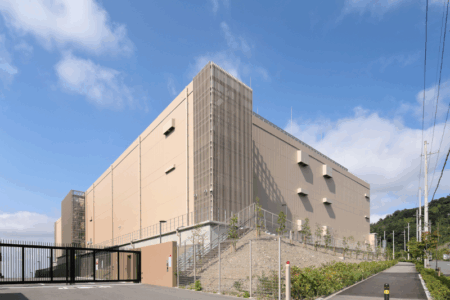Inflation is surging.
The US inflation rate has hit 8.3 per cent, a 4-decade high, while in Singapore, core inflation for August has risen to 5.1 per cent, a near 4-year high.
The US Federal Reserve has gone on the warpath, hiking the federal funds rate by 0.75 percentage points last week, the third consecutive time it has done so.
With the latest increase, the Fed policy rate now hovers in a range of 3 to 3.25 per cent. Investors, however, may need to brace for more pain ahead as rate increases may continue for the rest of this year and into 2023.
The prospect of higher rates has dampened demand for a whole range of yield products, and real estate investment trusts (REITs) have not been spared.
Traditionally seen as reliable income instruments, REITs have lost favour due to the combination of high inflation and increased borrowing costs.
Singapore is renowned as a REITs hub and many retirees rely on their portfolio of REITs to generate a stable and predictable stream of dividends for their golden years.
But as higher rates increasingly like the new normal, do REITs still qualify as attractive investments?
An insightful look at history
To answer this question, it’s useful to take a look at history.

Source: Macrotrends
The chart displays the 20-year history of the US federal funds rate which shows 2 clear spikes.
The first, from June 2004 till July 2007, saw interest rates surging from 1 per cent to a high of 5.25 per cent in 3 years.
The second was more recent, with the federal funds rate increasing from a low of 0.1 per cent in October 2015 to a high of 2.4 per cent in May 2019.
The 2004-2007 period is indicative of what we are experiencing now – a sharp increase in rates that may eventually take us past the 4 per cent mark.
Yet, REITs such as CapitaMall Trust and Ascendas REIT (SGX: A17U) managed to grow their DPU throughout this period.
Retail REIT CapitaMall Trust’s distribution per unit (DPU) increased from S$0.1023 to S$0.1334 from 2005 to 2007.
Around the same period, Singapore’s largest industrial REIT, Ascendas REIT, saw its DPU rise from S$0.0956 to S$0.1275.
The period from 2016 to 2019 also saw several REITs raising their DPU without missing a beat.
Mapletree Logistics Trust’s (SGX: M44U) DPU increased from S$0.0738 to S$0.07618 from fiscal 2015/2016 to FY 2017/2018.
Suburban retail mall REIT Frasers Centrepoint Trust (SGX: J69U) also saw consecutive rises in DPU from its fiscal 2016 to 2018, going from S$0.11764 to S$0.12015.
Meanwhile, healthcare REIT Parkway Life REIT (SGX: C2PU) saw its core DPU increase from S$0.1212 to S$0.1287.
So, how exactly did these REITs manage to raise their DPU in an environment of rising interest rates?
Organic and inorganic growth
Acquisitions are an effective way for a REIT to grow its DPU.
Ascendas Reit employed this method to rapidly scale up its portfolio from 2005 to 2007.
Singapore’s oldest industrial REIT started off with just 16 properties as of 31 March 2004 (FY2004) and more than quadrupled this number to 77 by FY2007.
These acquisitions helped DPU to grow strongly and offset any effects of the surge in interest rates during the period.
Aside from acquisitive growth, REITs can also count on 2 types of organic growth to boost their DPU – asset enhancement initiatives (AEI) and positive rental reversion.
Mapletree Logistics Trust has tapped both AEI and positive reversions, along with choice acquisitions, to increase its DPU during the 2016 to 2018 period.
Between FY2016 to FY2018, there was an AEI on top of 9 acquisitions.
What’s more, during the 3 fiscal years, the Mapletree Logistics Trust enjoyed positive rental reversions as well.
Protecting the downside
REITs also make use of 2 mechanisms to guard against a sudden sharp surge in borrowing costs.
The first is to hedge their debt or lock in their loans at fixed rates.
The other method is to stagger the debt maturity of their various loans so that a large proportion of their loans does not come due when rates are rising.
It’s useful to note that REITs with strong sponsors such as Mapletree Investments Pte Ltd, Frasers Property Limited (SGX: TQ5) and CapitaLand Investment Limited (SGX: 9CI) can also borrow at favourable rates that help to keep their REITs overall cost of borrowing low.
Take CapitaLand Integrated Commercial Trust (SGX: C38U), or CICT, for instance.
As of 30 June 2022, the retail and commercial REIT sported a low average cost of debt of 2.4per cent and had 81 per cent of its borrowings on fixed rates.
CICT also has its debt maturity well spread out, with the bulk of its loans maturing in 2025 to 2027 and the furthest maturity extending till 2033.
There is also no single year where more than 15 per cent of its debt comes due during this period.
It’s the same case for Frasers Logistics & Commercial Trust (SGX: BUOU), or FLCT.
Around 81 per cent of its borrowings are locked in with fixed rates as of 30 June 2022, and it enjoys a low cost of borrowing of just 1.6 per cent.
In addition, the bulk of its loans will come due from FY2024 to FY2026.
Meanwhile, both REITs have also quantified the impact of rising rates on their DPU.
Assuming a rise of 2.5 percentage points in base interest rates, CICT will suffer a 6.7 percent decline in its trailing 12-month DPU.
For FLCT, the impact is smaller at 3.2 per centas the REIT has a lower cost of debt compared with CICT.
Assuming both FLCT and CICT undertake acquisitions, recycle capital and tap on AEI and redevelopments, it’s conceivable that they can buffer the decline in DPU or even post higher DPU.
Choose REITs wisely
Not all REITs are built the same way.
Those with strong sponsors and a ready pipeline of properties that can be injected into the REIT have a better chance of acquiring to offset any DPU decline.
Many have also learnt from the lessons of the Great Financial Crisis in 2008-2009 by maintaining a good spread of maturities for their debt and locking in fixed rates to mitigate a sharp increase in financing costs.
Although their unit prices may have fallen because of poor sentiment, REITs still qualify as consistent dividend payers during an economic downturn.
Rather than selling the REITs and foregoing their stream of reliable dividends, I may consider adding more to my investment portfolio.
Note: An earlier version of this article appeared in The Business Times.
Not sure which REIT to put your money in? Use our 7-step REIT checklist to find one that fits into your retirement plan. Checklist is inside our latest FREE report “Singapore REITs Retirement Plan”. Click here to download it now.
Follow us on Facebook and Telegram for the latest investing news and analyses!
Disclosure: Royston Yang owns shares of Frasers Logistics & Commercial Trust.




